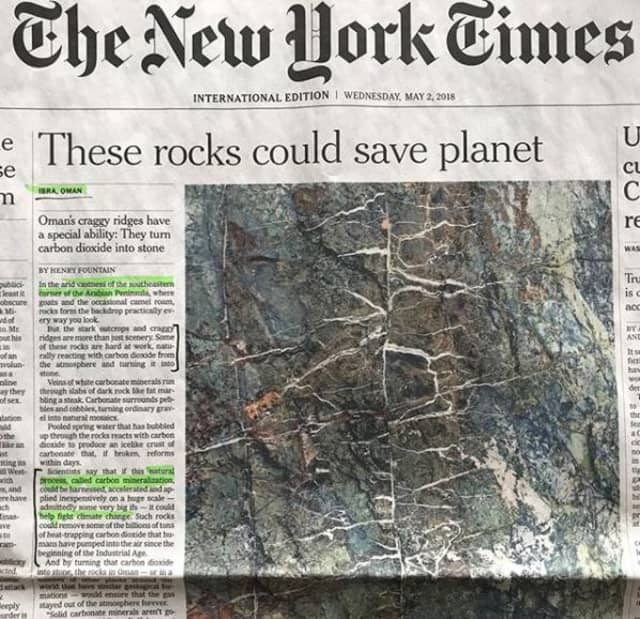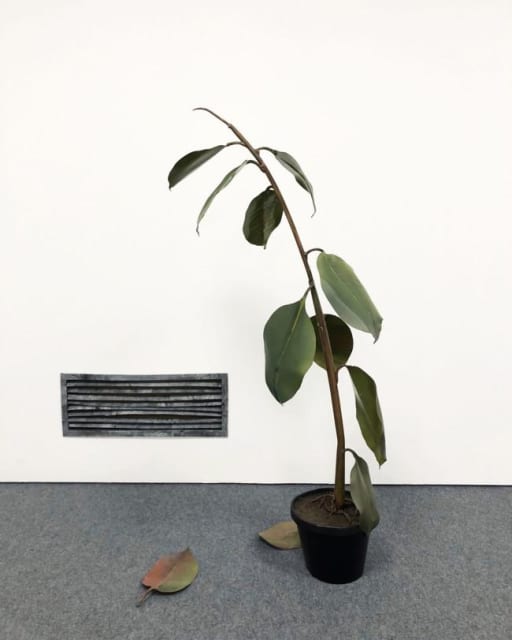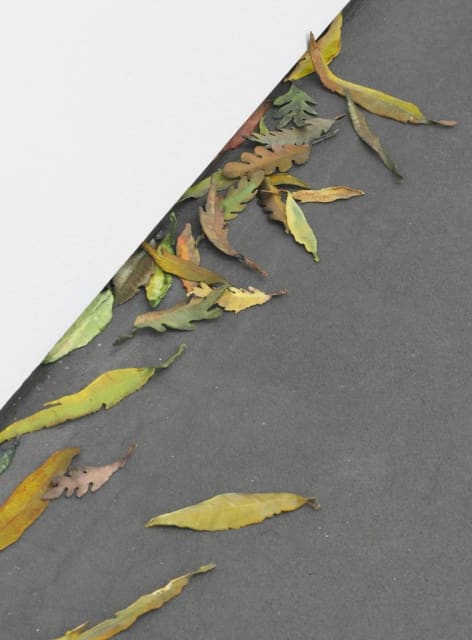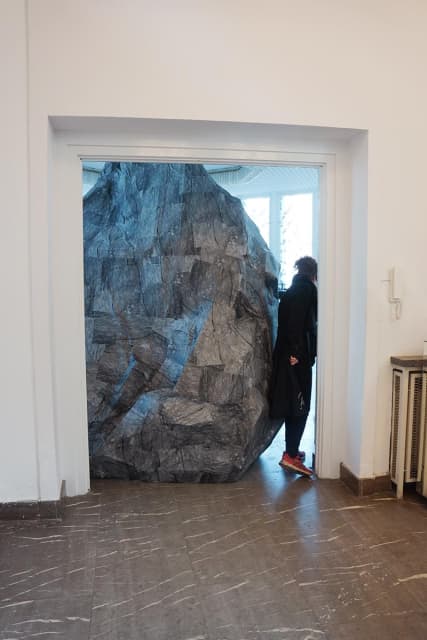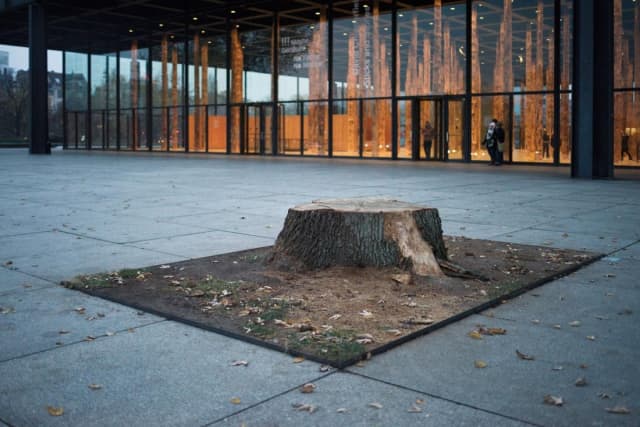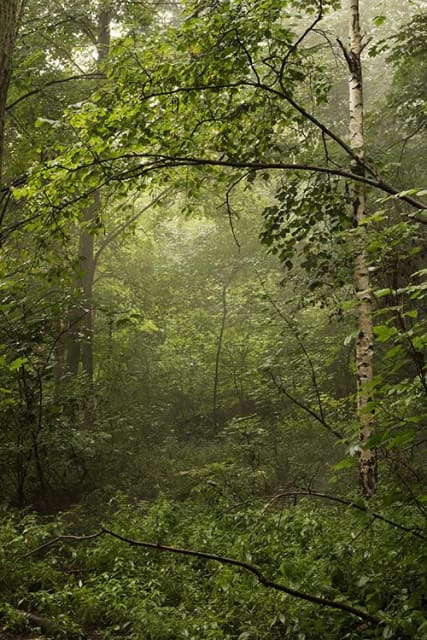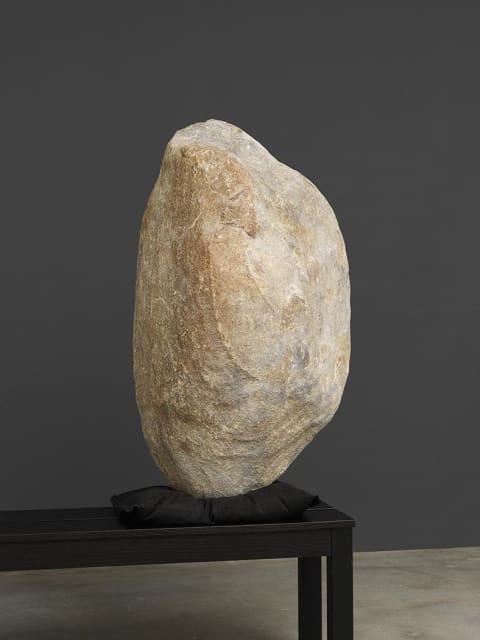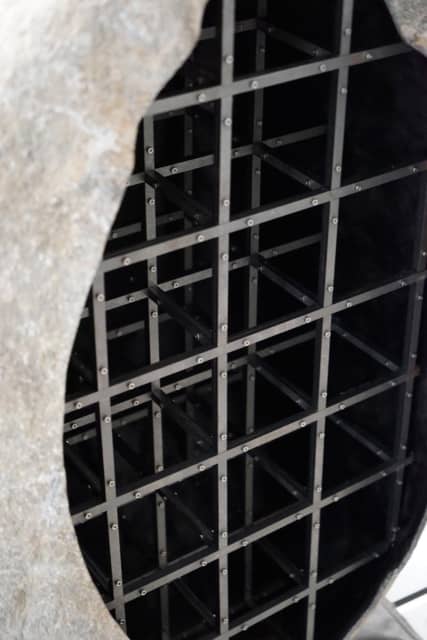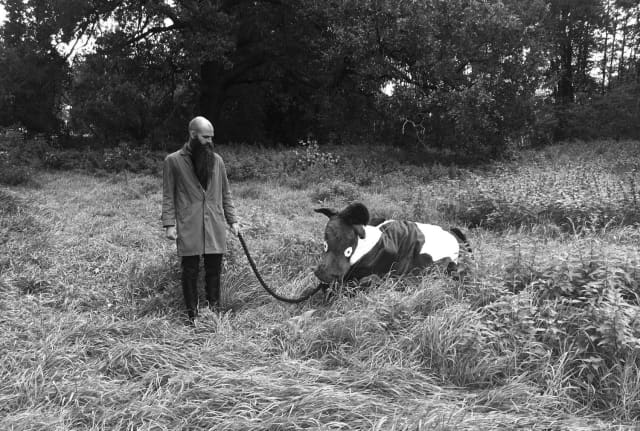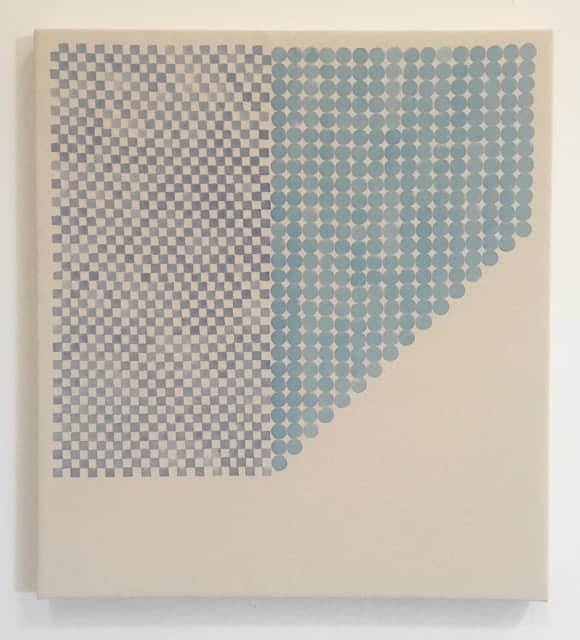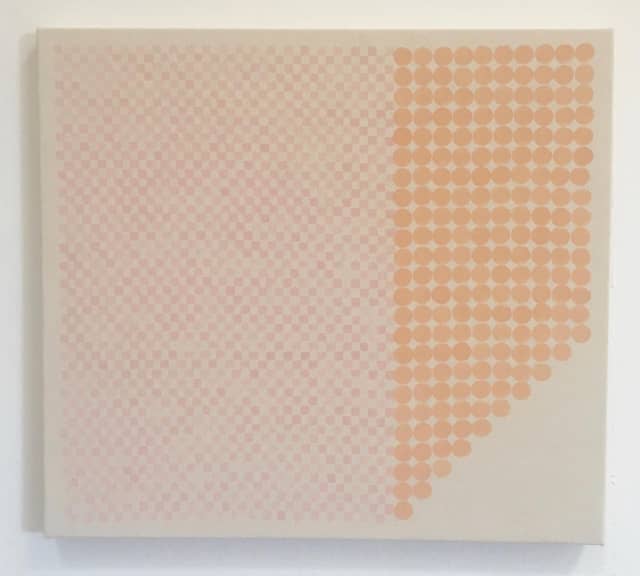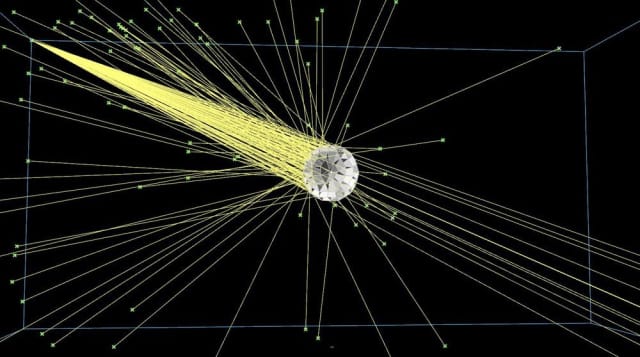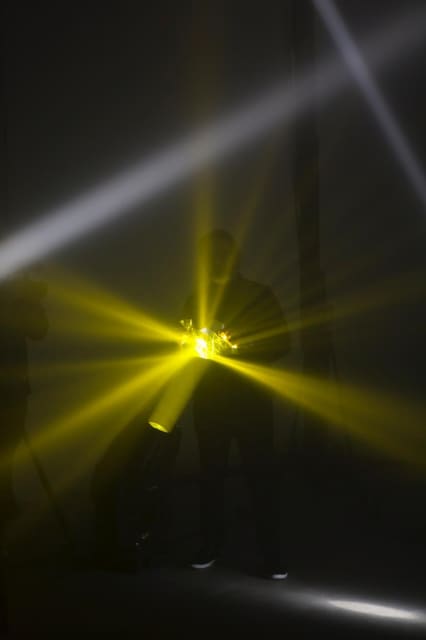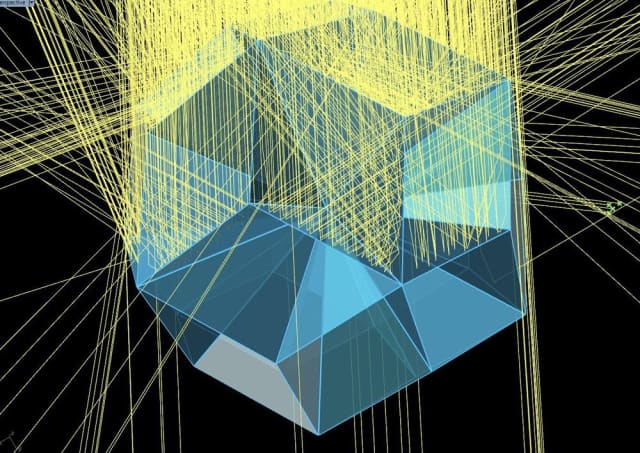"It is not a matter of deciding whether you are on the Left or not, but whether you are terrestrial or not: ‘Have you thought about the material nature of a soil upon which nine or ten billion of us must live?’ It is in this context that the question of migration intersects with the question of climate. People who do not think that the question of climate is important, or who deny that question’s existence, can still see the question of migration perfectly clearly. It is one that is decisive in every country, election after election, and it is driving people back to focusing on national frontiers at precisely the moment when these are least suited to dealing with either the question of climate or of refugees." - For a terrestrial politics: An interview with Bruno Latour

Four handgardens, 2008
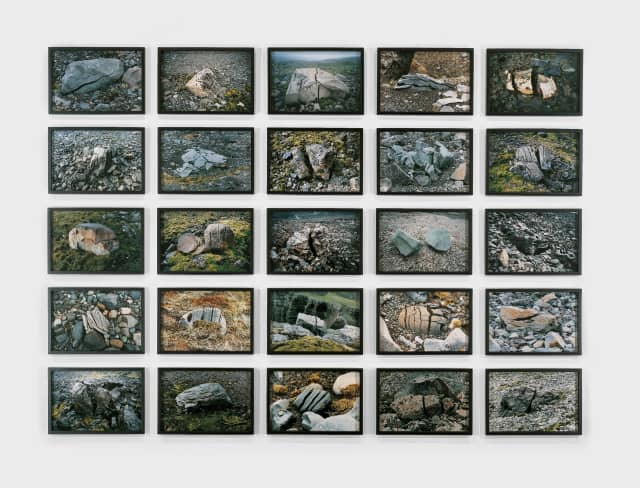
The broken stone series, 1997
Geologist Minik Rosing, whom the studio has collaborated with on a number of projects, including Ice Watch, presents a very old stone at Life Is Space, 2014
Your multiple shadow house - part of the exhibition Welcome Home - in Danish Architecture Center in the newly opened BLOX in Copenhagen

“What does the alteration of our environment have to do with the limits of our imagination? And where is the link between scientific instrumentation and the question of “emotional orientation?” - Brian Holmes, Driving the Golden Spike. Image: Model of The weather project, Studio Olafur Eliasson, 2002
"Nobody likes it when you mention the unconscious, not because you are pointing out something obscene that should remain hidden - that is at least partly enjoyable. Nobody likes it because when you mention it, it becomes conscious. In the same way when you mention the environment, you bring it into the foreground. In other words, it stops being the environment. It stops being That Thing Over There that surrounds and sustains us. Ecology without nature argues that the very idea of “nature” which so many hold dear will have to wither away in an “ecological” state of human society. Strange as it may sound, the idea of nature is getting in the way of properly ecological forms of culture, philosophy, politics, and art." Timothy Morton
Wilshire & Cochran, Petrit Halilaj and Alvaro Urbano 2017. Performance. Mak Center for Art and Architecture.
At The New York Times Art Leaders Network, Olafur talks about how museums can help empower visitors
Déambulation avec Olafur (Extracts) - Choreography by Marie-Agnés Gillot. Performed by Marie-Agnés Gillot & Luc Bruyére. Within the context of Eliasson's exhibition: Objets définis par l'activité, Espace Muraille. Video produced by Movie Riders
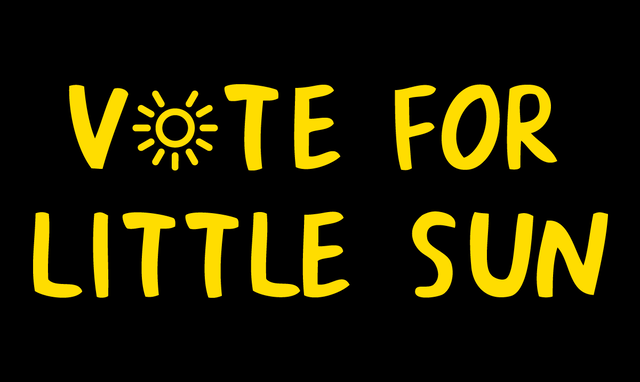
Little Sun has been nominated for a Billion Acts Hero Award by Billion Acts - a global organization led by 14 Nobel Peace Prize Winners including The Dalai Lama and Desmond Tutu. Please support them by voting here: https://www.billionacts.org/hero-awards-voting

Reading list #studio #research
via Instagram
“The work is built around highly saturated color produced by shining intense beams of pure white light through monochrome gels. Essentially derived from the film process known as Technicolor, a movie staple launched in rudimentary form a century ago and honed to a fine edge after World War II, the installation resonates against its Hollywood context. Eliasson has deconstructed the process into something new and exhilarating. Two mechanized, high-intensity light projectors are set on tracks in the theater gallery’s rafters. At variable speeds they slowly traverse the big space, sliding back and forth. Gels in cyan, magenta and yellow have been inserted into openings between the linear and triangular structural beams holding up the roof. As the tracking light passes through the gels, rectilinear shapes in bright, vibrant colors are projected below onto an enormous screen and set into motion at the far end of the room. One reason the work is so eye-grabbingly vivid is that, unlike the electronic pictures flooding across mobile devices and television screens or the ubiquitous computer-generated imagery in movies today, color in Eliasson’s immersive installation is not broken up into pixilated bits hovering in blackened soup. The color is instead pure. The picture is a “reality projection,” and it is beautiful in the extreme. Excerpt from Christoper Knight's review of Reality projector in Los Angeles Times

Corners and Curves - carrot stamping, acrylic and watercolor on canvas - by artist Jesper Dyrehauge. His primary working tool is carrot stamping - a way of re-negotiating prevalent conceptions of painting. Carrot stamping is a way of thinking through making; an embracing and reconfiguring of material and form, in which the outcome is partly conceived, but can never be fully known. This series was conceived on a residency in Los Angeles. “Sunlight became a critical mediator of my relationship with los angeles – a mediator which has the potential to produce new ways of thinking about color, form and the idea of the ‘fade'. LA is a contrasting study of color. the matte and polished colors of this city – deep and vibrant blues of the ocean and of the skies which reflect it, bright greens of overwatered lawns – sat in opposition to the bleached colors of the city's dyed relics – its cars, signs, buildings. when i entered people’s homes, i was often surprised to find the interiors dark, almost gloomy. rooms often had small windows with thick curtains, to keep out the hard bite of the sun. coming from denmark where sunlight is celebrated, i had never felt the need to curtain my windows. In LA the sun is not always a welcome stranger, but sometimes hostile. sun in los angeles is persistent, beating more aggressively than in northern europe. it bleaches all that it touches: old cars at the side of the road, resting in chipped and faded paint with custom made covers to protect their wrinkled dashboards from the sun; street signs and painted buildings fading in the force of the sun. these faded hues were not gaps in a chromatic vocabulary, but offered a whole new language of color. Fading is so often couched as a 'loss' of color: a dissolution of vibrancy, a bleaching of form. but, my experience in LA began to put this idea of the 'fade' into question. when color fades, it doesn’t disappear, but is transformed as a new color. colors are poetic, rather than grammatic – a faded color is not a color lost, but a color that has gained another texture. fading, i realised, can also be another path for growth." www.jesperdyrehauge.net
Reflections - a film by Peter Tukei Muhumuza, part of a series of films on light, energy, and life - see the entire series here: Little Sun
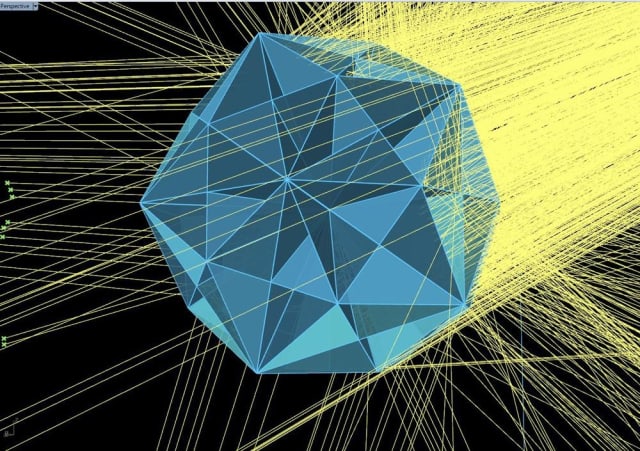
On-going research: Targeting rays on a spherical polyhedron built from kaleidoscopes. To influence light reflection, we have been looking into variations of mirror sphere-like shapes built from kaleidoscopes and mirrors. A challenge is finding the right structure based on geometrical symmetry that will then reflect light less randomly. We have been testing different structural designs by applying polyhedron geometry, but also investigating concave stellations of the Rhombic Triacontahedron. The use of parabolic concave mirrors helps to limit random reflection and by adjusting the orientation of specific mirrors, we can in a sense control the behavior of light.
Targeting rays, studio test
via Instagram
Studio Visits: Enrique Rivera Gallardo, researcher, curator and audiovisual producer. He is the president of the Chilean Video Corporation and Director of the Chile Media Arts Biennial, which promotes experimental video art in the region
www.soe.tv
Confetti - a film by Peru Ana Ana Peru - part of a series of films on light, life and solar energy - see more films here: Little Sun

The unspeakable openness of things, Red Brick Art Museum, Beijing. Photo: Roman Pilipey
Fjordenhus, Denmark
via Instagram
